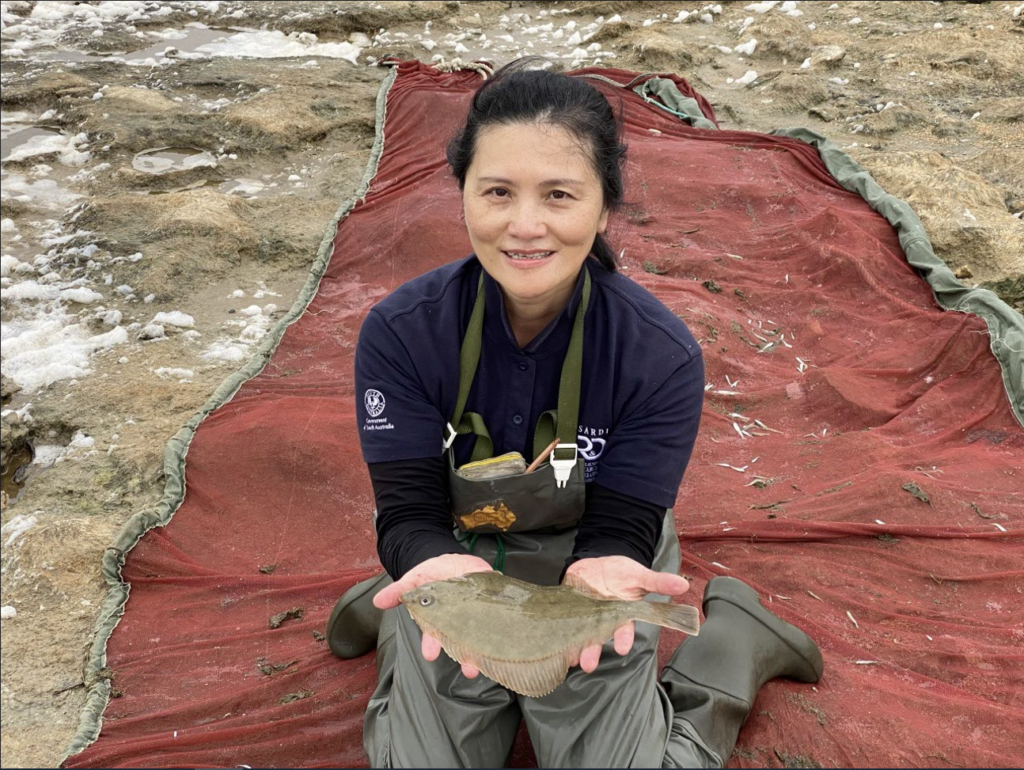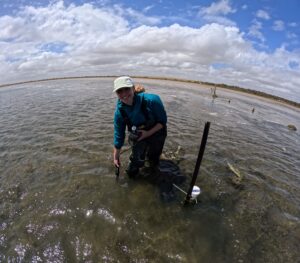The Coorong is a unique wetland, which is culturally and environmentally significant at local, national and international scales. The reduction of fresh water inflow into the Coorong, exacerbated during the Millennium Drought (1996-2010), has led to a long-term ecological decline. In particular, hypersalinity and nutrient enrichment in the South Lagoon has impacted aquatic plants, invertebrates, fish, waterbirds and the entire food web. The 2022-23 Murray-Darling Basin floods were South Australia’s largest flood event since 1956, with the high freshwater flows likely having a significant effect on the ecosystem of the Coorong.
Researchers from the University of Adelaide, Flinders University and the South Australian Research and Development Institute (SARDI) are working together to provide valuable insights into the health and functioning of the Coorong ecosystem following the high flows, to inform water management, conservation strategies and decision making.
The Goyder Institute for Water Research is coordinating four research projects to understand how the high flows have affected water quality, nutrient dynamics, the food web and key biota in the Coorong, as well as expanding on previous experiments to inform ecological restoration options:
- Project leader of the research, Associate Professor Luke Mosley of the University of Adelaide, along with his team, is examining how nutrients and related conditions in the sediment and water have changed in response to the 2022-2023 high flows.
- Professor Sabine Dittmann of Flinders University is studying the effect the high flows have had on macroinvertebrates (their distribution, diversity, abundance, biomass and functions). Her team will also look at the effect of translocation of macroinvertebrates and aquatic plants into the South Lagoon.
- Associate Professor Qifeng Ye and team at SARDI are focussing on the effect the high flows have had on fish (their distribution, diversity, abundance, biomass, growth rate and body condition) and the diet composition of key species in the Murray Estuary, and North and South Lagoons of the Coorong.
- Professor Michelle Waycott and her team at the University of Adelaide are looking at how the high flows impacted on aquatic plants and algae, in particular the status of the Ruppia community, the filamentous algal community and the environmental condition of the shores of the Coorong.
The project is part of the Healthy Coorong, Healthy Basin Program which is jointly funded by the Australian and South Australian Governments. The Goyder Institute for Water Research is collaborating closely with the Department for Environment and Water to conduct the study. For more information of the project please contact Dr Bryony Cotterell at the Goyder Institute for Water Research.



